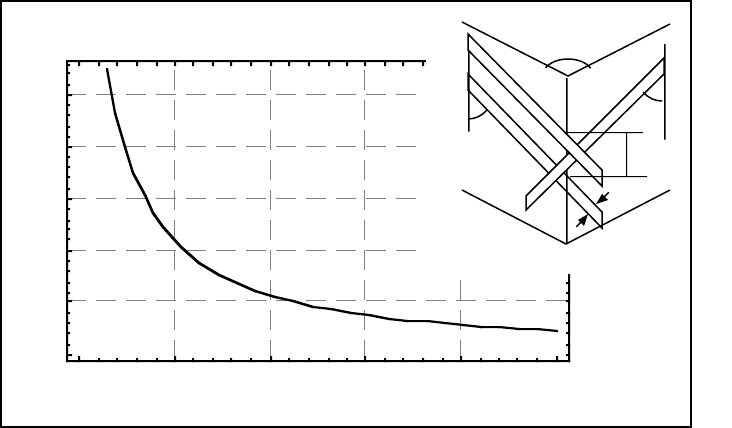
ANALYTICAL METHODS FOR TEXTILE COMPOSITES
Given the circular yarn assumption, the width of the preform depends only on the
number of yarns arranged on a side, k, and the diameter of the yarns, d. It is given by
w
k
= (2
1/2
k +1) d . (2.16)
10 20
40
10
20
30
40
50
Normalized Cycle Length h/d
Inner Yarn Inclined Angle, γ
Figure 2-18. Inner yarn angle of inclination versus cycle length for 1x1, 4-step braid.
2.3.3 Irregularity
The ideal geometry popularized in schematics of textiles, viz. a collection of straight
tow segments and smoothly curved arcs of tows, with regular tow spacings and well-
formed periodicity, is never realized in practice. The rigors and complexity of textile
manufacture and the distortions caused by handling preforms and forcing them to conform
to molds always introduce significant geometrical irregularity. Irregularity usually has a
measurable effect on elastic properties [2.15,2.21,2.22]; and a dominant effect on strength,
fatigue life, and all properties related to damage mechanisms and work of fracture [2.22-
2.26].
Geometrical irregularity is manifested in many ways. The following list is indicative
but not exhaustive.
1. Tow spacing. Inconsistency in tow tensioning during the textile process and handling
of preforms after fabrication often results in uneven spreading or compacting of tows.
Uneven spreading is indeed geometrically necessary when a flat preform is draped over a
